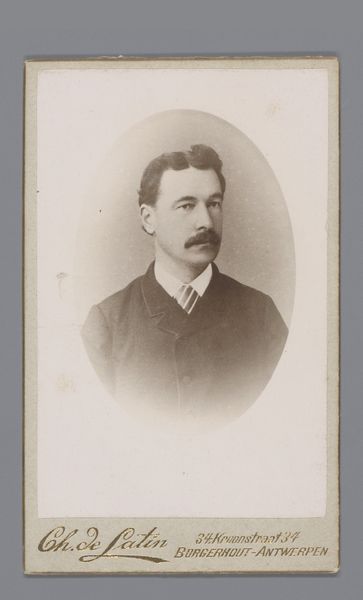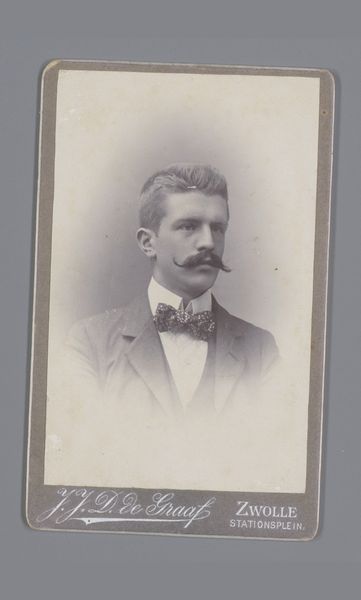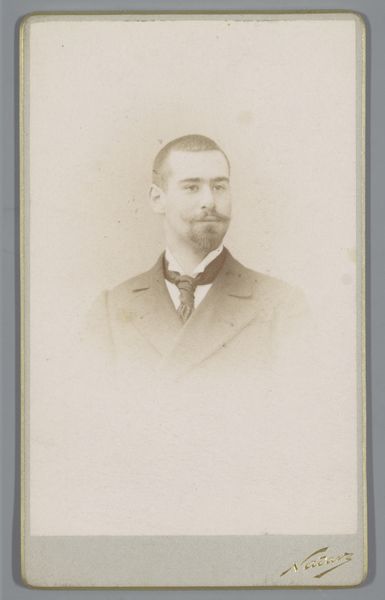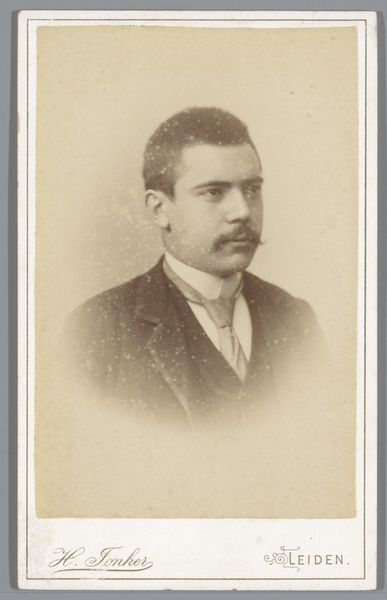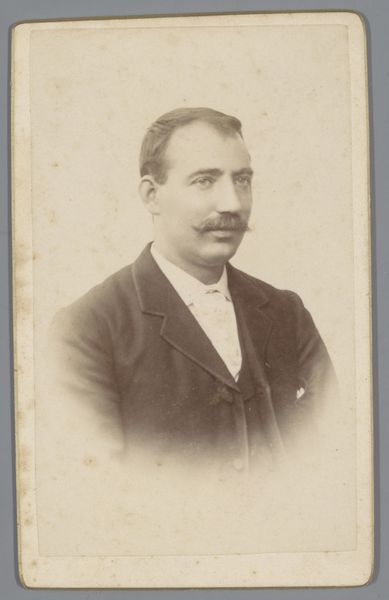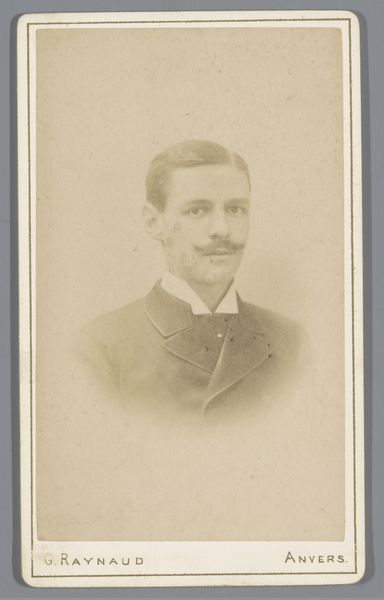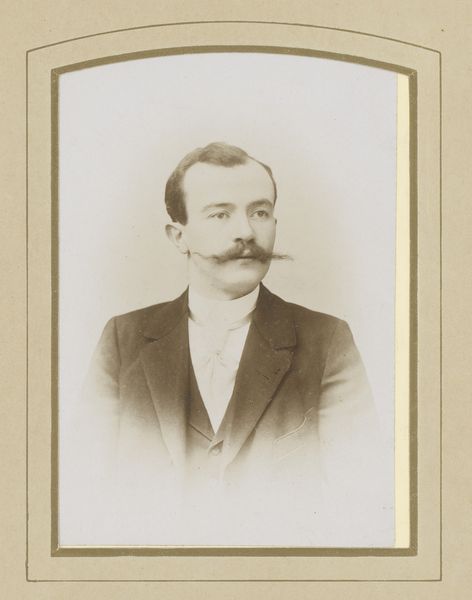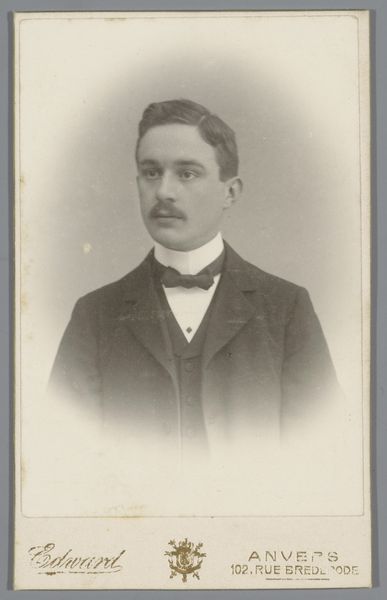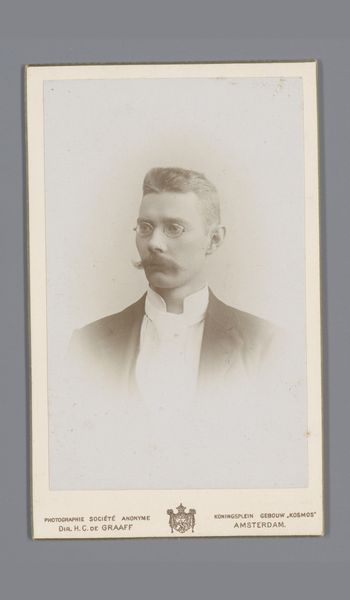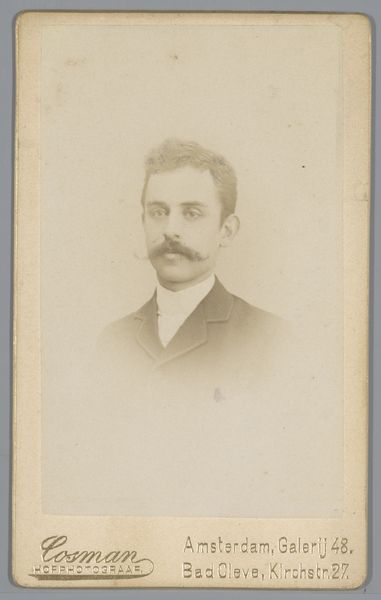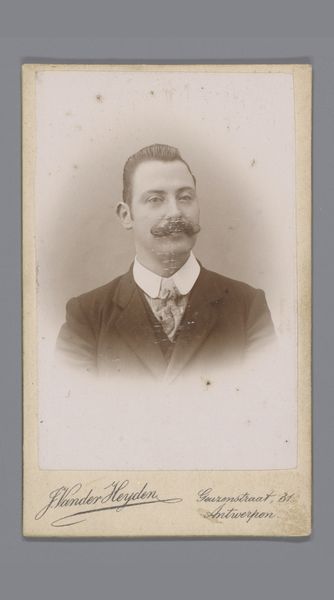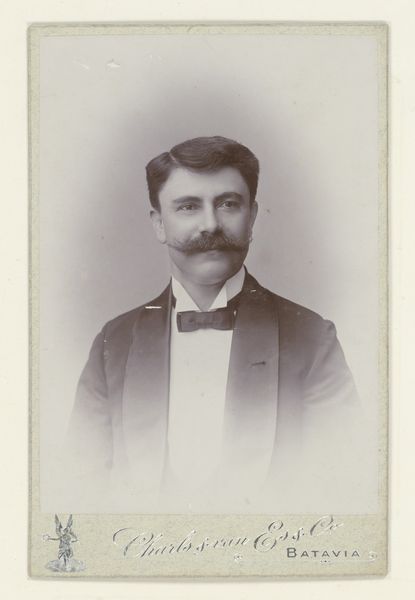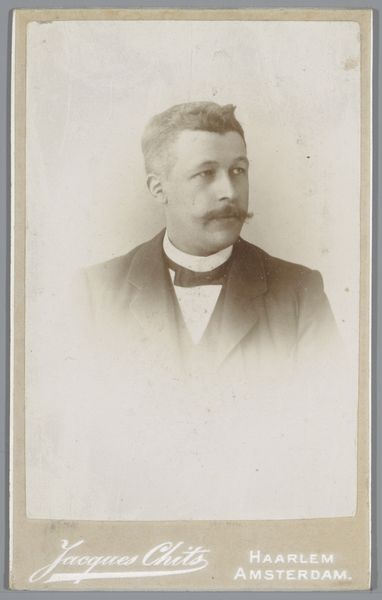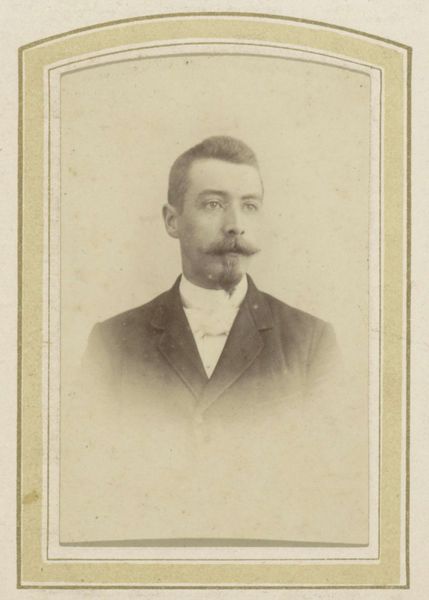
Dimensions: height 103 mm, width 60 mm
Copyright: Rijks Museum: Open Domain
Curator: Here we have a piece held at the Rijksmuseum entitled "Portret van een onbekende man", dating from 1888 to 1902, by Antonius Joannes van der Stok. It is a formal studio portrait, mounted on card stock, which was typical for the time. Editor: I find this portrait quite striking in its almost stoic simplicity. The man's direct gaze creates a palpable sense of connection across time. There is also a somber undertone I can't quite place. Curator: That somber feeling is fascinating in terms of portraiture in this era. Photography democratized the portrait, and with it, expectations changed. Editor: So, less about aristocratic swagger and more…everyday respectability? Is it challenging normative, hegemonic masculinity for example? Curator: In a way, yes. Think about who could afford portraits before photography became widespread. Now, the burgeoning middle class wanted their own visual representation. It fueled a commercial enterprise around identity and status. He is posed in front of a blank background. What assumptions can we make about class, race and gender, for example? How are notions of accessability being shaped in this moment? Editor: That’s a point well taken. We interpret his dress as respectable, upper-middle-class, but perhaps that’s simply what he sought to project. This speaks to agency – he and others can begin crafting an accessible, consumable persona. He’s participating in image making. I wonder how he imagined this being received? Curator: The details – the carefully groomed mustache, the neatly arranged tie – speak volumes about societal expectations for men at the time. This isn’t just about fashion; it's about adhering to standards of success. Editor: Standards of performance and compliance, perhaps. He certainly seems to present a carefully curated self to the camera. There is an implication that this constructed visual representation is also somehow true and enduring. Fascinating. Curator: I agree. Considering that portraits like this were often family heirlooms, there is that implicit narrative of passing down not just an image, but also a legacy. Editor: What a perfect encapsulation of an era caught between tradition and modernity. Thank you for pointing out such poignant contextual cues.
Comments
No comments
Be the first to comment and join the conversation on the ultimate creative platform.
